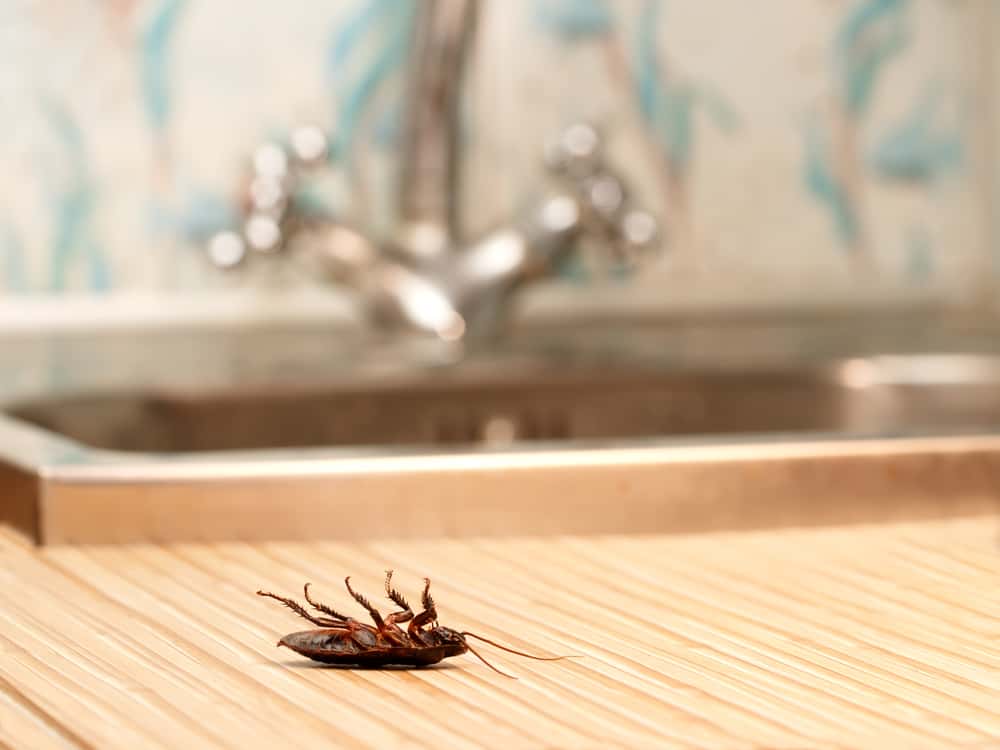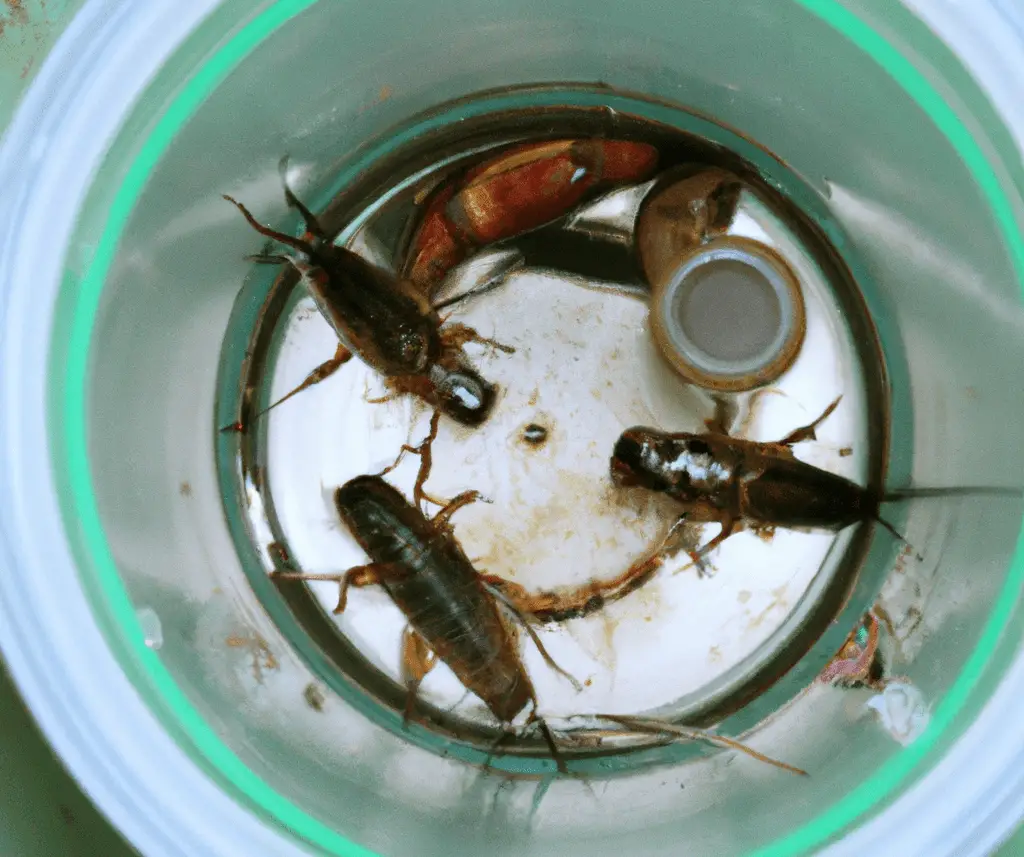Anyone that lives too close to neighbors or nature has had to deal with cockroaches entering their homes looking for organic materials. Cardboard boxes being saved for those special occasions are a particular favorite and lead to large roach infestations. Any food items are nearly impossible to keep safe no matter what food containers or plastic containers you use; those food odors will bring the bugs.
Along with carpet beetles, hungry cockroaches will find attractive food sources in your house. At some point, a pest control service will be needed to turn all your pests into dead insects, but in the meantime, is there any way to keep your food scraps safe?
Can roaches go through plastic containers and bins? Let’s find out.
Can Cockroaches Bite Through Plastic?
Cockroaches can bite through plastics like plastic bags and thin plastic containers. They have strong jaws and mandibles and can crush and rip through most barriers. If a plastic bag contains a source of food or natural materials like decomposing plant materials, then these annoying pests will not stop until they get inside.
Just like cardboard boxes, some of the cockroaches inside plastic containers got there as eggs. Cockroach eggs are tiny and can end up in absolutely impossible places. Thin plastic Tupperware, zip locks, or the plastic walls of storage containers can all be chewed through by a determined cockroach.
Unlike saturated cardboard and paper containers that cockroaches will nest in, these kinds of pests must have a reason to eat through plastic materials. Food in zip locks and weak plastic containers for food will not stop roaches that have sensed the enticing food smells. In extreme cases, cockroaches can follow rodents into sealed containers for food and lead to even further food contamination over time.
Types of Containers Cockroaches Can Get Through
Any paper or cardboard containers or boxes are no match for cockroaches. These insects will chew through fabrics and some types of construction materials like wood, MDF, and drywall. Containers with moisture or the scent of food will quickly attract pests into your apartment or home. Looking at the types of material used to store food, are there any that can stop the mighty roach?
Below are common plastic packaging types. While some of these may prove durable over time, they will all become food for bugs unless an exterminator is called. But some food storage wrappers hold up better than others. Let’s look at bags and containers around the kitchen.
| Plastic Type | How Cockroaches Get In | What Attracts Them |
| Bread Bag | Teeth and Mandibles | The smell of food and safety |
| Tupperware | Squeeze Through | The smell of food and safety |
| Ziplocks | Teeth and Mandibles | The smell of food and safety |
| Deli Meat Container | Squeeze Through | The smell of food and safety |
| Store Packaging | Teeth and Mandibles | The smell of food and safety |
| Ice Cream Containers | Squeeze Through | The smell of food and safety |
| Pet Food Bags | Teeth and Mandibles | The smell of food and safety |
Bags

Bags are a quick and practical solution for many food storage needs. When we place our leftovers in a sealed plastic bag, in our mind, it is safe and secured from bacteria and bugs. But bags will not stop a biting roach, and this security is a false illusion.
Bread bags that we rely on to keep our loaves fresh are no match to a cockroach’s mandibles. Ziplocks are quite durable and, in most cases, can hold liquid without leaking. While these bags seal tightly, they cannot stop a roach. Store packaging and pet food bags are strong plastics than lowly grocery bags but will not withstand the crunching jaws of hungry pests.
Containers
Plastic storage containers for excess food or to keep food fresh are better than bags at stopping roaches. Some of the thicker containers cannot be chewed through easily and may thwart most efforts. Other types of tightly-sealed Tupperware can prevent scents from escaping. But over time, in a bad enough infestation, somehow roaches will get inside.
Some common plastic leftover tubs are Tupperware, lunch meat containers, and ice cream containers. Depending on the thickness of the plastic, some may stop roaches from entering. Roach eggs may still slip inside even airproof containers, so killing roaches in the kitchen is the only way to keep your food safe.
Are There Cockroach-Proof Plastics?
Some plastics can and should be used for long-term food storage. Thick food-grade plastics like polyethylene can keep out pests in basements and storage rooms. Other containers are made with reinforced plastic walls that can make thin plastic even more durable. Thermal-insulated plastics are also much too thick for roaches to break through.
Food caches buried or placed for prepping are often metal-lined to keep rodents and bugs out and preserve the food contents. It can keep out storage pests like cockroaches easily. The most important thing is that the containers are airtight, as roaches can squeeze through anything.
If air or water can get in, chances are roaches will too. If possible, place the containers where daylight will hit them, as roaches will nest and breed in dark, moist areas much more aggressively.
Can Roaches Go into Plastic Storage?
If there is a place for air or water to get in, then somehow roaches will too. Even plastic bins that seem impossible for roaches to get in can end up with roaches, so the best way to keep roaches out of the bin is to start a cockroach extermination routine. If there are cockroaches in your kitchen, they will continue to breed and spread, and if you have plastic containers with food as well, then they will try to get in.
Strong plastic and tight seals can work for a long time to keep a small number of roaches and pests out. But eventually, food in plastic can become a concentrated target. Cockroaches can live for several months without food, but once they get hungry or a scent of nearby food, they will attack in numbers.
The constant pressure of many roaches laying eggs and squeezing and biting along every inch of a container will lead to a breach. Light roach eggs can follow air currents and slip inside boxes, hatching into pests that are impossibly in an airtight sealed container. The best way to stop roaches from getting into plastic is to get rid of the roaches fast.


